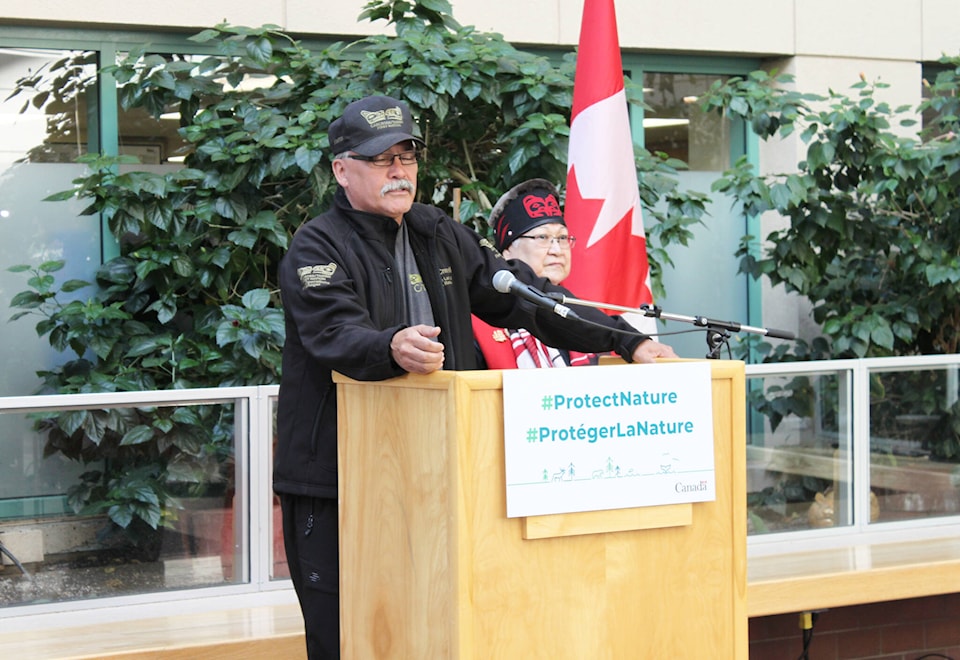The federal government will be putting another $30 million into First Nations, Inuit and Métis guardian initiatives across the country, with part of that funding going to the Carcross/Tagish First Nation (C/TFN).
The funding was announced at an Aug. 29 press conference, though no precise figure on how much will be provided to the C/TFN program was available.
The additional funding will expand the First Nation’s capacity for greater collaboration, monitoring and management of wildlife and human activities in its traditional territory, the First Nation says.
“The First Nation guardian initiative program is a crucial step to continuing along the path that our ancestors had carved out for us,” C/TFN’s Haa Shaa du Hen Maria Benoit said. “Not only will this strengthen our connection with the land but it will also assist us in building strong and lasting collaborative relationships with our partner governments and neighbouring First Nations.”
As Benoit explained, the programs sees guardians keep watch over the land.
Danny Cresswell is one of the C/TFN guardians. He told reporters that guardians like himself travel throughout the traditional territory and report back. If they see something illegal they may call officials in environment; if there’s a problem animal they may work with conservation officers, for example.
“We report back on anything that we see or anybody who we’ve talked to — people in campgrounds, hunters that are camping on the B.C. side — we get to chat with them and they tell us if they’ve got [or have] seen any concerns.”
Similar Indigenous guardian programs across the country are aimed at helping to ensure land, wildlife, water and ice are protected.
“Canada’s conservation goals are only achievable by trusting and recognizing Indigenous traditional roles, knowledge and science,” Steven Guilbeault, the federal minister of Environment and Climate Change, said.
“In the spirit of reconciliation, the government of Canada is committed to supporting Indigenous leadership in conservation. Programs such as Indigenous guardians are crucial to protecting ecosystems, species and cultures for future generations.”
Other northern guardian programs that will see federal funding include the Inuvialuit land administration guardians to develop and implement an Inuvialuit-led environmental monitoring program to support evidence-based decision-making; management, monitoring and protection of the Inuvialuit settlement region in the Yukon and the Northwest Territories; and the Northwest Territory Métis Nation guardians to build capacity and establish “eyes and ears” on the land to protect species and their habitats, to monitor and observe climate change and industrial-related impacts on their traditional homelands and to facilitate opportunities for intergenerational knowledge transfer to youth.
Again, precise figures on how much funding will go to each program were not provided.
In total more than 80 programs across the country will benefit from the close to $30 million in funding.
“First Nations, Inuit and Métis have been stewards of their land for thousands of years,” Yukon MP Brendan Hanley said.
“Their traditional knowledge, experience and leadership are imperative to the success of Canada’s environmental goals. The Indigenous guardians initiatives are an active step in reconciliation and an investment in our children’s greener future in the North.”
Contact Stephanie Waddell at stephanie.waddell@yukon-news.com
